There may be billions of habitable worlds throughout the Milky Way, but where are the radio-blasting, starship-sailing aliens? Where are our cosmic Snapchat buddies? If they exist, they’re probably thousands of light years away from us, nestled somewhere toward the center of our Galaxy.
And they’re likely to be utterly ancient.
That, at least, is the conclusion of a fascinating new paper, which takes a first hack at at a question I think we’d all like answered: Where in the Galaxy are we most likely to find other intelligent beings like ourselves? The answer, it turns out, is actually quite intuitive: In the densely packed Galactic center, where all the stars are.
Of course when you dig into it, things get a bit more complicated.
The Galactic Habitable Zone
A generation ago, we didn’t know of a single planet outside our solar system. But recent exoplanet-hunting telescopes have lifted the cosmic veil. Now our Galactic map contains thousands of worlds, some of them, rocky and Earth-sized. Finding signs of life beyond Earth is no longer a pipe dream.
“It’s only been recently with Kepler that we’ve learned there are small, Earth-sized planets around a range of stars,” Mike Gowanlock, a post-doctoral researcher at MIT’s Haystack Observatory, told Gizmodo. “Now that we know all those planets are out there, one question is, where should we look?”
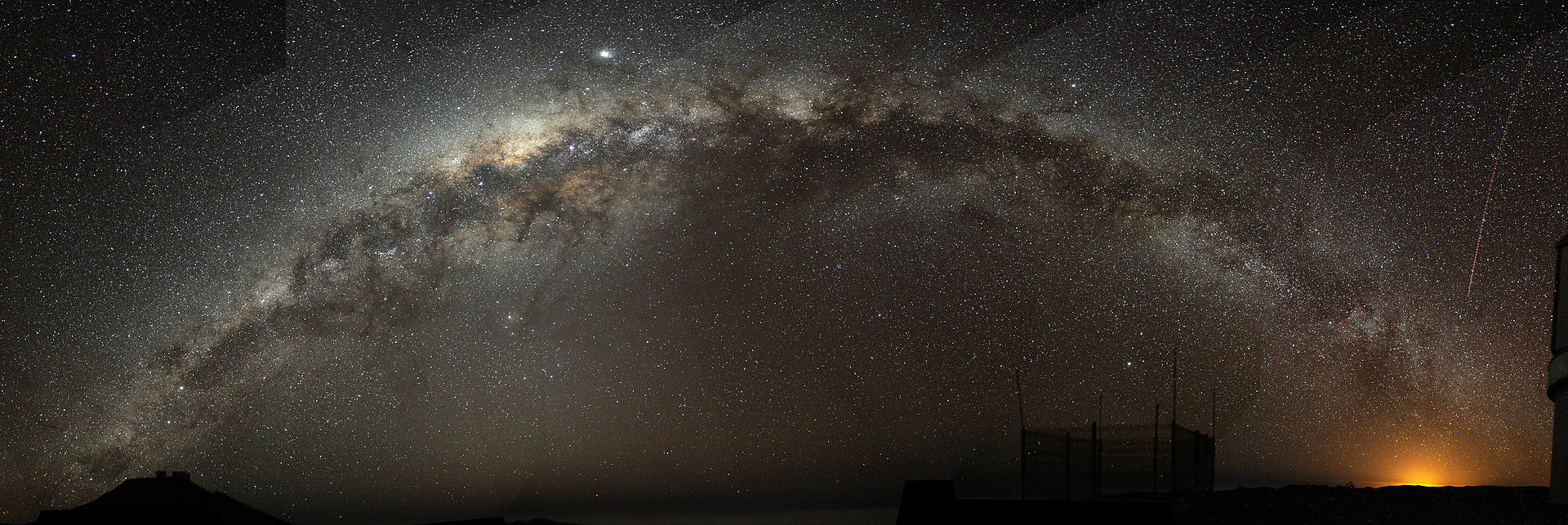
The Milky Way arching across the night sky. Image Credit: Bruno Gilli/ESO
Earth is still the only life-bearing world we know, and so folks in the business of hunting for aliens usually start with some big assumptions.
If we presume that our world is a good prototype for planets with complex life, we can build a shortlist of basic requirements. We need a star of a certain brightness and metallicity, and we need a healthy dose of evolutionary time. We also need a (relatively) disaster-free cosmic environment.
Then we can ask ourselves: Where else in the Galaxy are these criteria met?Can we define a the “Galactic Habitable Zone” where we’re most likely to find Earth-like worlds?
It turns out we can, because those basic habitability ingredients aren’t distributed uniformly across space and time. Neither are the catastrophic events that stand to sterilize entire worlds.
“If we had a census of all the planets in the Galaxy, we’d say, ok, we should look there,” Gowanlock says. “But we don’t, so we rely on modelling.”
Where Are the Aliens?
In 2011, Gowanlock and colleagues used computer simulations to construct the first “habitability heat map” of the Milky Way, identifying the most promising regions for complex, land-based life to emerge. Their models took into account the mass and density of stars, star formation history, galactic chemical evolution, and time. They also included a cosmic disaster: Exploding stars.
Supernovae explosions are the most powerful events in the Galaxy, showering their stellar neighbourhoods with high-energy x-ray and gamma radiation. Any Earth-like biospheres within a few parsecs will see their ozone layers destroyed. In Gowanlock’s models, life on the surface of such worlds will be fried, turning back the evolutionary clock.
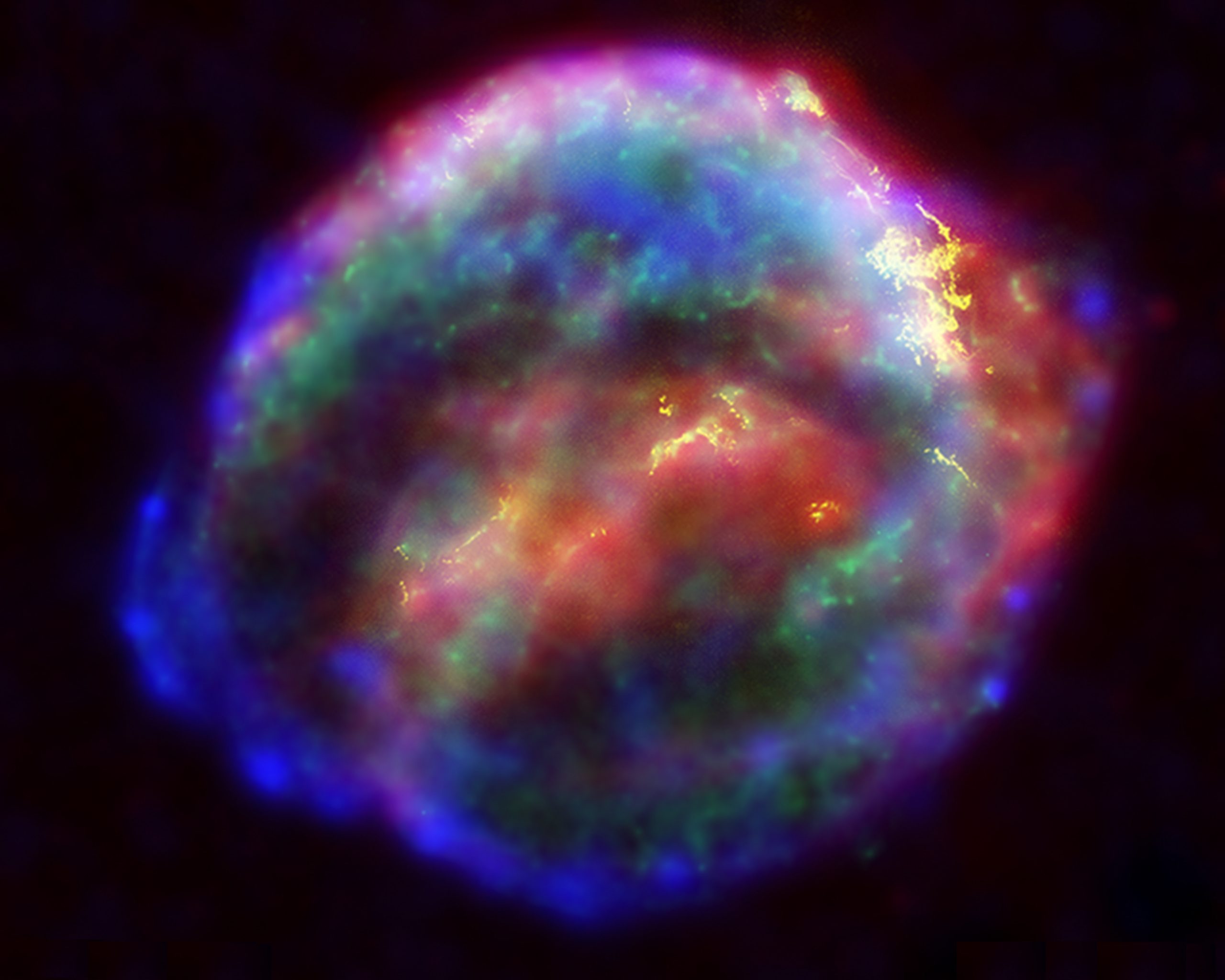
Multi-wavelength compilation image of Kepler’s supernova remnant SN1604, via Wikimedia
Modelling millions of stars with a galactocentric radius of anywhere from 14 to 2.5 kiloparsecs (1 kpc = ~3,300 light years), Gowanlock found that overall habitability increases toward the galactic center. In the Galaxy’s inner reaches, stars pack much more tightly and apocalyptic supernovae are fairly common. But these ‘reset’ events are outweighed by the sheer density of stars, which afford more opportunities for life to emerge.
While Earth sits 8 kiloparsecs (26,000 light years) from the Galactic center, Gowanlock’s model suggest the habitability prospects are several times higher at a radius of 6 or 4 kiloparsecs (19,500 or 13,000 light years). That’s a bit of a bummer, because our state-of-the-art telescopes are nowhere near powerful enough to study planets at such tremendous distances.
But! If one of these distant star systems harbored an intelligent civilisation, we might be able to pick up a communications signal — especially if aliens were intentionally blasting a high-energy beacon off into space. “It’s hard to imagine that a very advanced civilisation would leak a bunch of energy out into the cosmos for no reason,” Andrew Siemion, director of UC Berkeley’s SETI program told Gizmodo. “Many people believe that the first signal we get will be intentional.”
Siemion points out that if we took our most powerful radio transmitter — the Arecibo Planetary Radar — stuck it at the center of the Galaxy, and pointed it back at the Earth, we’d be able to detect the signal with modern technology.
So, if ET is trying to ring us from the distant reaches of the Galaxy, we could, in theory, pick the signal up. But where to look? To chart out promising regions, Gowanlock extended his 2011 models to include the emergence of intelligent life, assuming once again that evolution would be disrupted or delayed by supernovae.
Figure 8 from the paper offers a nice summary of the findings. Each of the panels shows a cross sectional view of the Milky way, from the perspective of an Earthling staring toward the center of the Galaxy. From top to bottom, the panels depict three hypothetical cross-sections that we might decide to sweep for aliens — at a distance of 3, 4 and 5 kiloparsecs.
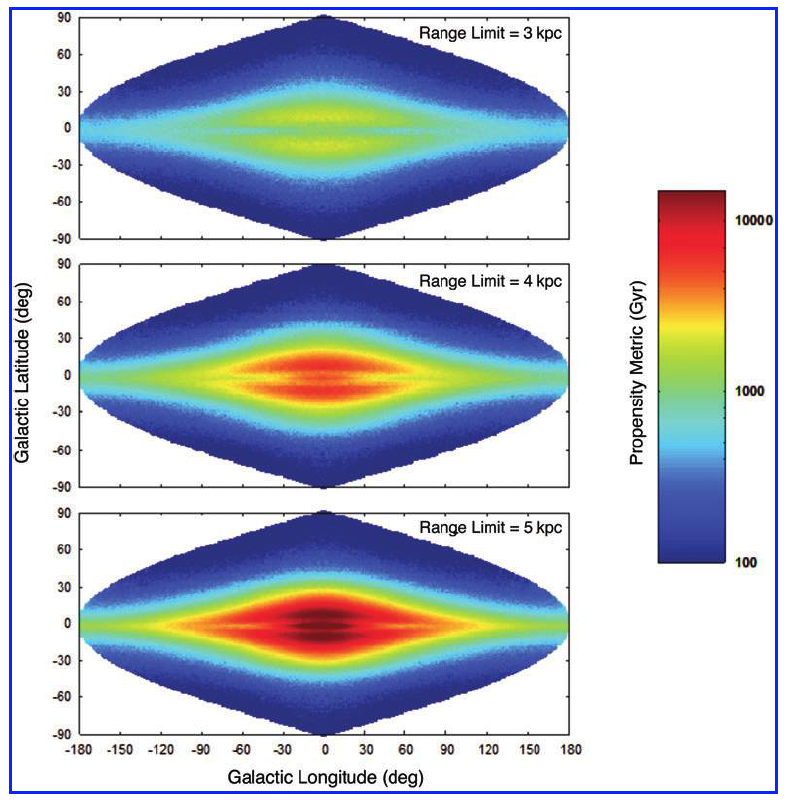
Image Credit: Morrison and Gowanlock 2015
Corroborating Gowanlock’s first round of models, intelligent life becomes more likely as you move toward the star-packed Galactic center. We’re a bit better off pointing our scopes slightly above or below the supernovae-filled Galactic mid-plane.
“The implication of Fig. 8 for SETI is that a compelling strategy would appear to be a complete survey of a region of the sky centered on the galactic center and spanning approximately 60 of longitude and 30 of latitude,” Gowanlock writes. “Note that the majority of target planets in this region will be close to the galactic center, so searches should focus on deliberate transmissions.”
Older…and Wiser?
Not only do Gowanlock’s models show that alien civilizations are probably far away, they’re likely to be ancient. The Galaxy formed from the inside out, and as we move toward the star-filled center, the cosmic landscape ages by billions of years.
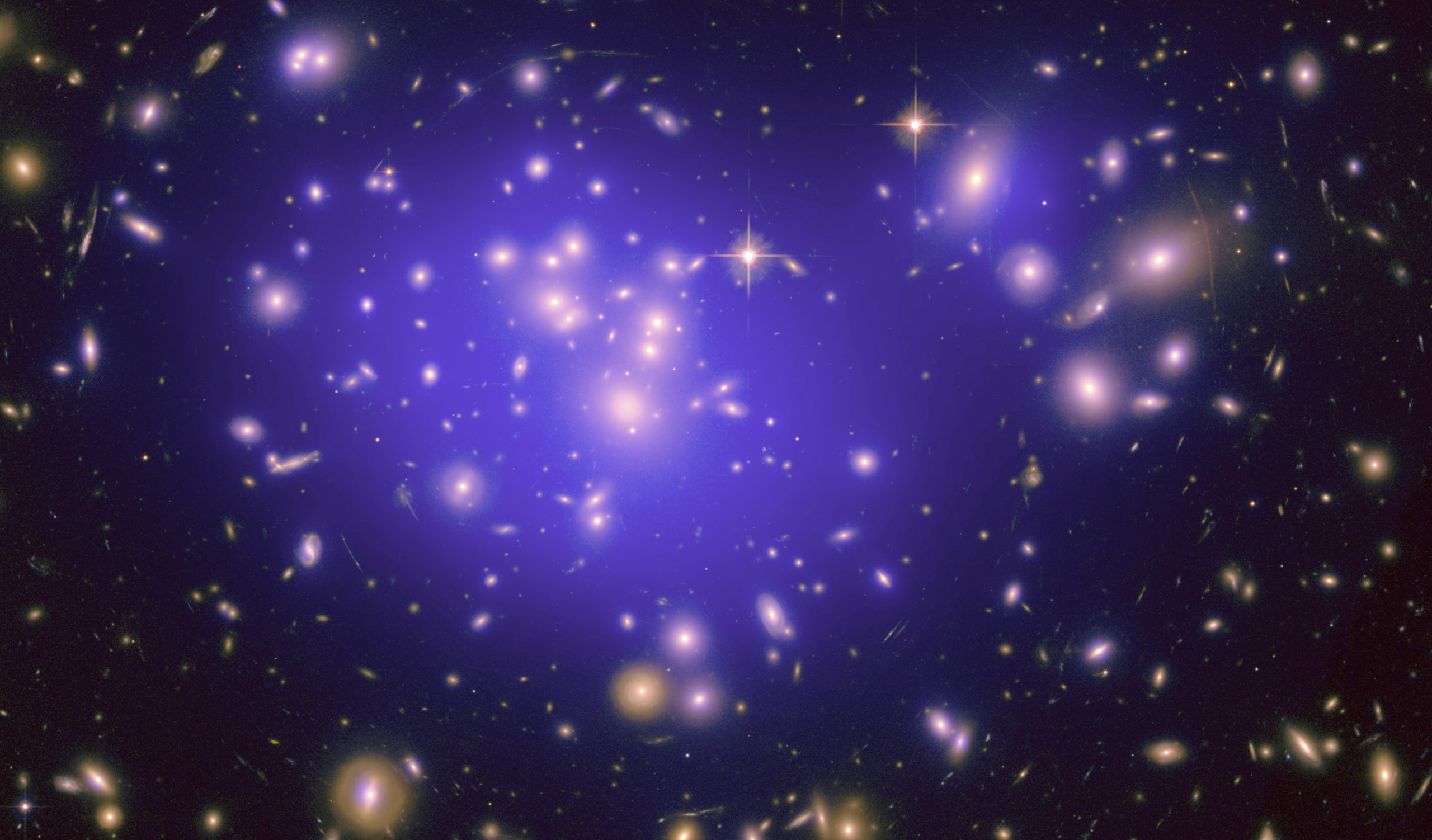
Abel 1689 Galaxy Cluster, via Wikimedia
“A similar number of opportunities were available in the inner Galaxy more than 2 Gyr ago,” Gowanlock writes. “If any civilizations have emerged in the inner Galaxy, they may be considerably older than our own.”
This idea isn’t actually new: It’s one that philosophers and astronomers alike have been chewing on for decades. What it means is that any technological civilizations we do find are probably going to be far more advanced than us. Perhaps the galactic center is swarming with superintelligent robots who don’t give two cents about using archaic technology to contact a bunch of squishy meatbags.
“From a scientific standpoint, we have to ask the question: If they’re hundreds of millions of years more advanced, would they even still use radio technology, or electromagnetic radiation?” Siemion says.
It’s a question that could fill an entire book. But, as Siemion points out, SETI is doing the best it can.
“The kinds of searches we’re doing are the best possible searches for evidence of advanced life beyond here that we know how to do based on our understanding of physics,” he says. “This is an incredibly compelling question, and we should look the best way we know how.”
More Questions Than Answers
Of course, we have to remember to take all talk of “where are the aliens” with a massive grain of salt. We really have no idea how likely it is for life, say nothing of intelligent life, to evolve in the first place. Supernovae aside, there are lots of other astrophysical phenomena, from gamma ray bursts to close encounters between stars, that could spell doom for a fledgling biosphere. The emergence of any kind of life may be a cosmic rarity.
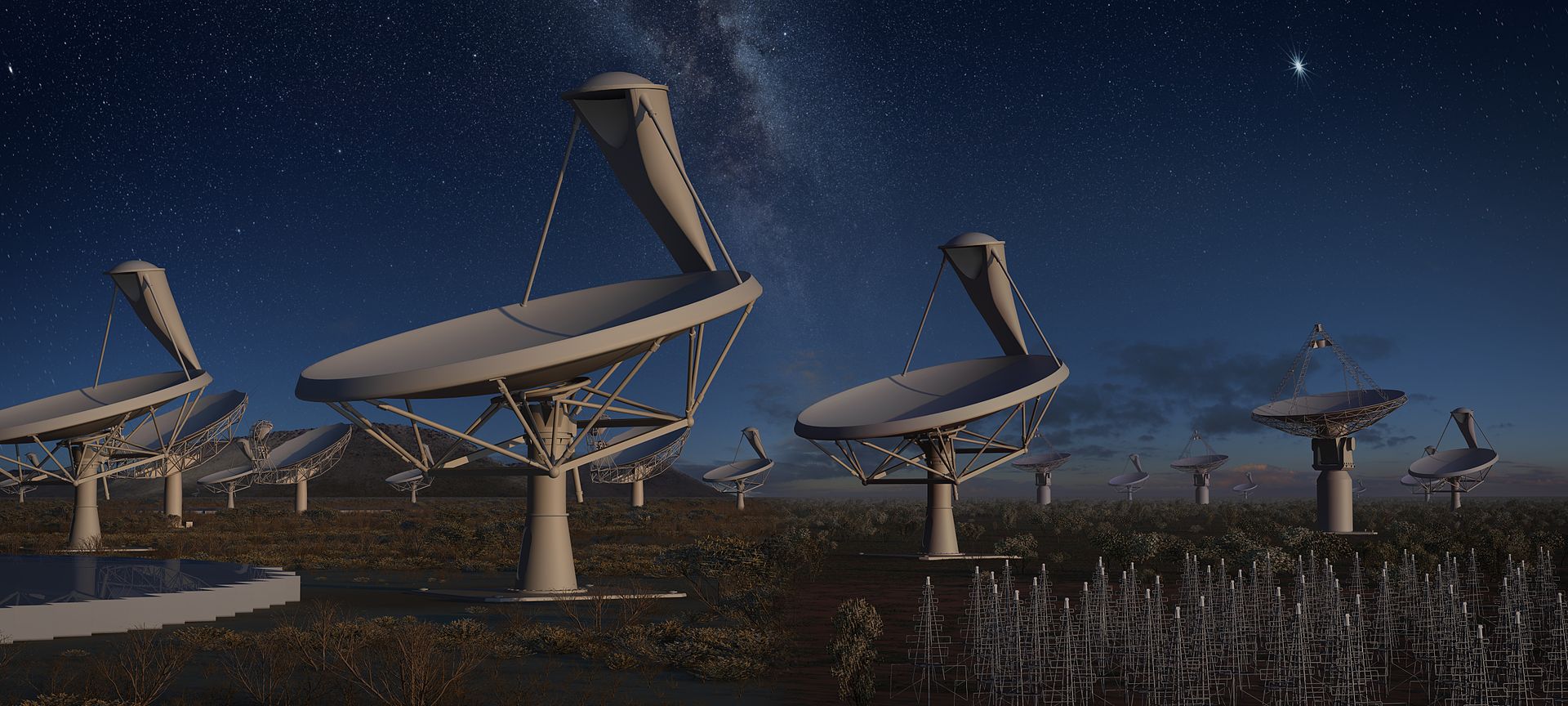
Artist’s concept of the Square Kilometer Array, via Wikimedia
On the other hand, Penn State astronomer Jason Wright points out that we can’t necessarily assume alien worlds will follow Earth’s evolutionary path. “This paper has looked at one very specific possible path to intelligent life and measured where that path is most likely to occur,” he says. “If what you’re imagining is Star Trek aliens with animals live on land, then this is an interesting conclusion. But I see it as a very small piece of a very complicated puzzle.”
Clearly, we have a lot more questions than answers on the matter of our cosmic loneliness. But if one thing’s clear, it’s that we’re not going to stop searching. Space is unimaginably vast, and we’ve only scanned a teensy fraction of our own backyard. With forthcoming observatories like the Square Kilometer Array, SETI researchers will be able to search the sky for radio transmissions thousands of times faster than ever before.
With better tools at our disposal — and a better sense of where we should be pointing them — we may just get lucky and find ourselves some galactic neighbours.
Traversing thousands of light years of space to meet them? That’s another matter.
Top: Milky Way Galaxy, via Wikimedia
